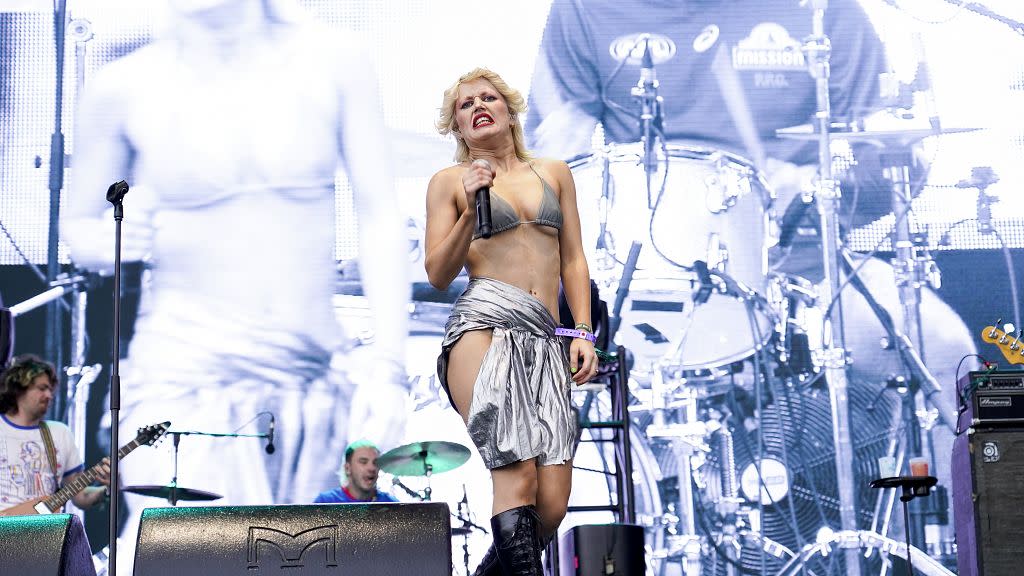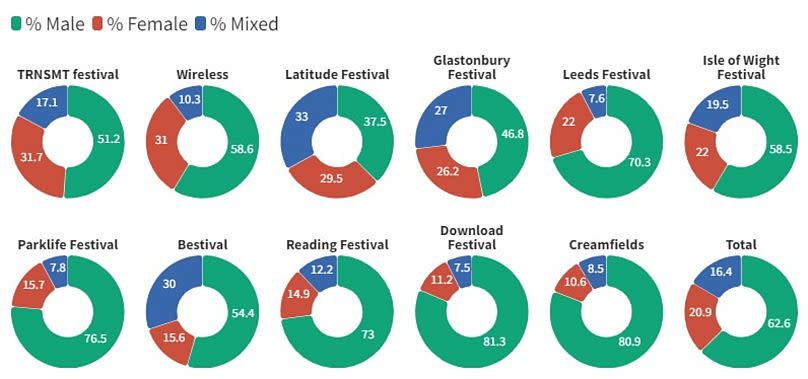New study shows UK music festivals continue to lag on gender representation

The music festival season is well under way and the UK has, as every year, a wealth of events catering to every music taste. However, a recent study leaves a sour taste in the mouth...
New research compiled by A2D2, a British company aiming to connect analogue audio devices with modern smart speaker sound systems, reveals that UK music festivals are still exhibiting a persistent gender gap on their main stages.
By analysing ten of the UK’s biggest and most popular festivals, A2D2 has identified the events that have the best and worst female representation, revealing that while festivals like Glastonbury have trumpeted landmark years when it comes to parity, the stats don’t lie and remain rather depressing.
Indeed, while it will be the first time in Glastonbury's 50+ years that two out of the three headline performers will be women – with this year’s main stage headliners being Dua Lipa, SZA and Coldplay – the festival still highlights an entrenched disparity between the number of male and female acts booked to play. Granted, Glastonbury has ensured that this year’s Pyramid Stage line-up has a 50:50 split, something which comes after criticism of last year’s all-male, all-white headliners, but there’s still work to be done.
Research shows that on average this year, 63% of acts are male artists or all-male bands, compared to just 21% of female solo artists or bands. That translates as one female act for every three male acts on the festival circuit this year.
Ranking wise, Glastonbury comes in fourth behind the TRNSMT Festival, Wireless and Latitude Festival, with 46.8% of male acts compared to 26.2% of female acts.

According to A2D2’s research, this year’s Latitude Festival has the best female representation of the UK’s 10 biggest festivals (29.5% of female acts vs 37.5% male), while the UK’s most popular EDM festival Creamfields is the worst offender with 81% of male artists and only 10% female acts.
"It's 2024, and it's disappointing to see such an imbalance," says Peter Fealey, founder of A2D2.
"There's a wealth of incredible female talent out there, and festival lineups should reflect the diversity of the music scene. From my X years experience working as a sound engineer, it’s also sad to see so few females in crew as well.”
The analysis led by A2D2 serves as “a call to action for festival organisers to achieve a more balanced lineup and give female acts the same level of exposure” and a lot of their results chime with another recent report, published in March, by the volunteer-run FACTS. That data shows that while women and nonbinary artists are making slow but steady progress in representation during festivals, the sad fact remains that the larger the festival, the less balanced the gender representation.
In FACTS’ study, which spans 2012 – 2023, it is noted that while “nonbinary” and “unidentified” as categories have grown, larger festivals tend to have lower proportions of female and non- binary acts, and that publicly funded festivals and festivals with female artistic directors have higher proportions of female acts.
The current landscape reveals that the issue is once again the result of an industry that has deprioritised women for many years, and is still marred by systemic sexism and stereotyping. And while Glastonbury co-organiser Emily Eavis said last year that the lack of female headliners is due to a “pipeline problem”, stressing how the issue stems from record companies and radio, there is a case to be made that a significant part of the issue is that bookers need to pay more attention to gender diversity and inequality.
Then there are the male artists, who would do well to follow in The 1975’s example.
Like them or no, the band’s frontman Matty Healy responded to a call by the Guardian’s Laura Snapes in 2020 for the band to “add a condition to your rider that says you’ll only play festivals that commit to X% (ideally 50%!) acts that include women and non-binary performers”. Healy wrote: “Take this as me signing this contract – I have agreed to some festivals already that may not adhere to this and I would never let fans down who already have tickets. But from now I will, and believe this is how male artists can be true allies.” He added: “I’m sure my agents are having kittens right now but time’s up man people need to act and not chat.”
Should A-listers make a concerted effort, then perhaps more promoters would display not only less apathy towards the issue of parity, but may also start implementing some much-needed changes.
And with a lack of female headliners not seeming to be as big of a problem at many of the major European music festivals, UK events need to do more should they wish to up their standards and reflect a more diverse music scene. Just look at what Primevera have implemented. That festival has continued to highlight something that on a global level is an anomaly but for them has become normal: since 2019, their commitment to equality has seen perfect gender distribution. Their 2024 lineup once again had 42.36% women, 42.36% men and 15.28% "mixed projects" - and when you see their programme, quality has not suffered.
They've done it, so patience is running thin when it comes to excuses from other major festivals.
More act and less chat, indeed.


